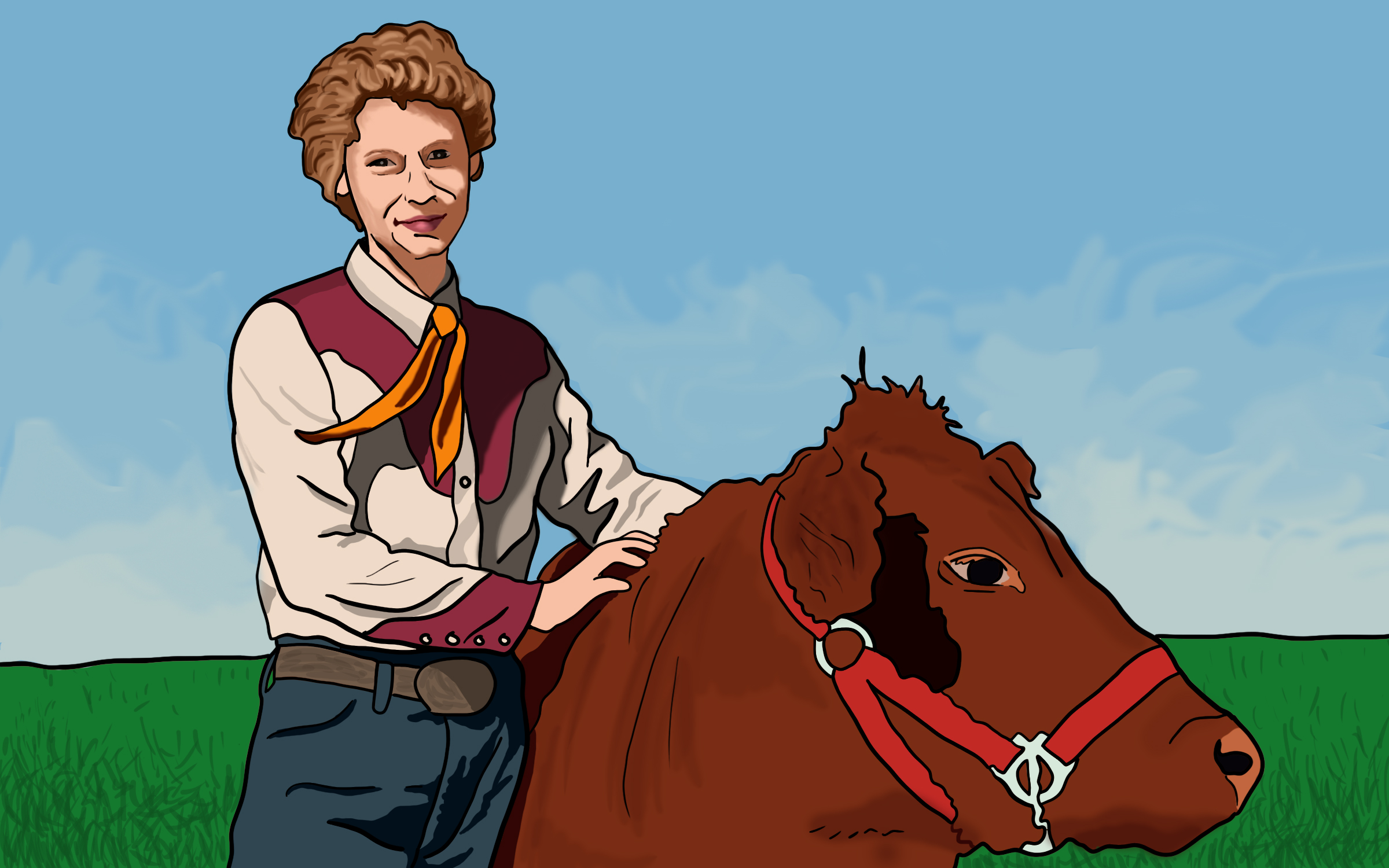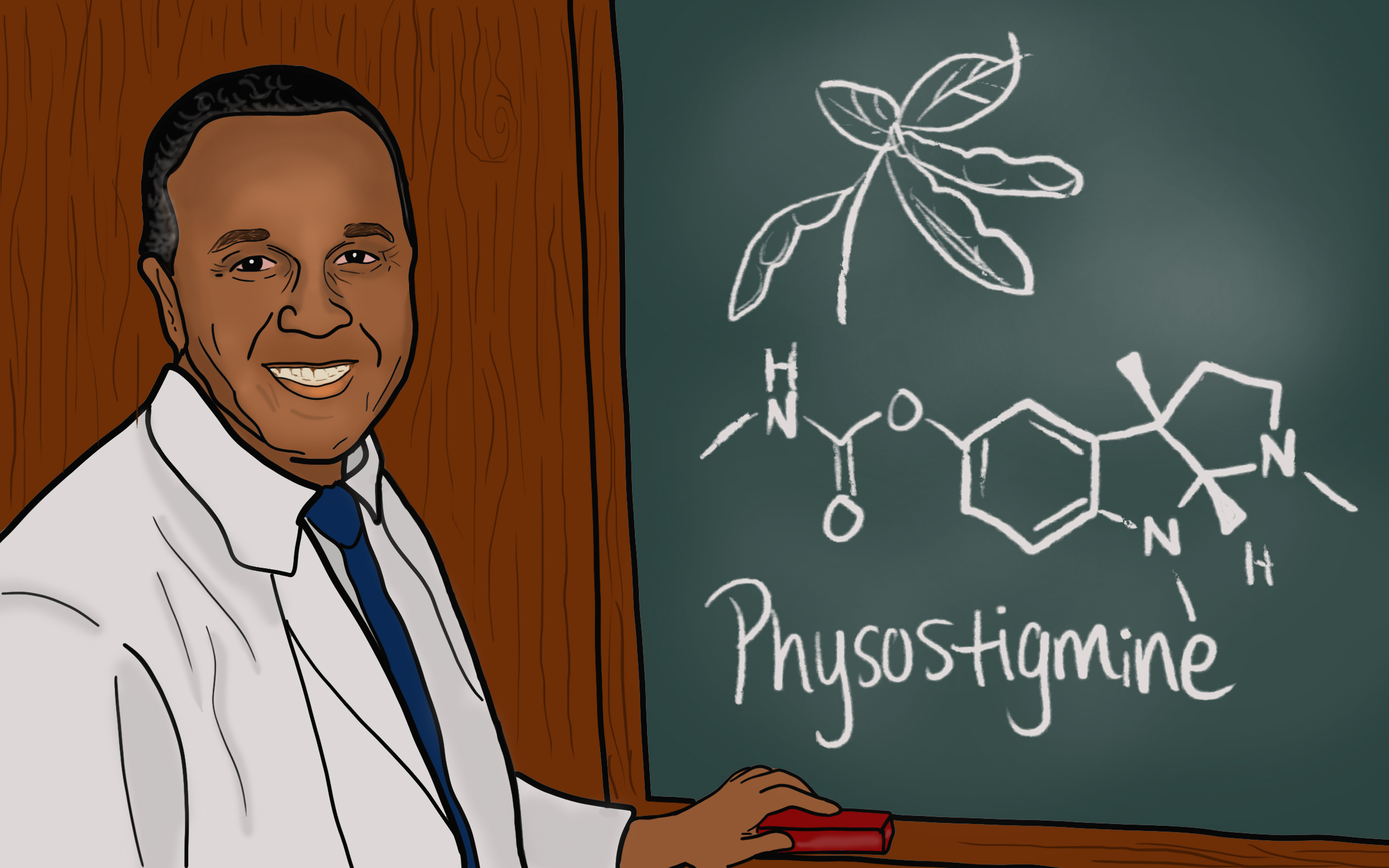Graduating ASU seniors publish children’s science book

School of Molecular Sciences seniors Annmarie Barton and Alison Lane holding their newly published book, "The Scientist in Me."
Graduating Arizona State University seniors Annmarie Barton and Alison Lane worked together on their Barrett, The Honors College creative project to write and publish "The Scientist in Me," a children’s “scientific notebook” that explores the lives and specialties of five scientists from historically underrepresented backgrounds.
Their book recounts the struggles and successes of Mary Anning, James Pollack, Temple Grandin, Percy Lavon Julian and Ayah Bdeir, while at the same time asking critical-thinking questions and encouraging readers to explore on their own through experiments and further research.
“I thought it important to write a book that helps kids explore and understand science while also addressing social issues," Barton said. "The scientists we write about are people who have overcome challenges while making strides in their fields.”
“We believe that representation in science is important, and therefore chose people from underrepresented backgrounds relating to race, religion, sexuality, disability and gender," Lane said. "It was also important to us that the scientists’ fields of study appeal to kids. Although X-ray crystallography might be interesting to us, subjects related to space and dinosaurs are more likely to interest kids.”
Lane and Barton, both students in the School of Molecular Sciences, decided to write about three women and two men, with at least two of the individuals currently living — and one scientist with a connection to ASU: Mary Temple Grandin. Grandin received her master’s degree in animal science from ASU in 1975. She is one of the first people to document firsthand insights about having autism.
Temple Grandin, ASU alumnus and scientist. Artwork by Alison Lane
To gather background information, Lane interviewed Grandin. “I am extremely grateful that I had the opportunity to correspond with Temple over email and speak with her on the phone," she said. "I was extremely nervous to talk with her, but she turned out to be very funny, personable and straightforward!”
Barton and Lane wanted to publish a book that is relatable for many children.
“I remember when I was younger, feeling I didn’t relate to the scientists I read about," Barton said. "That was something I wanted to change.”
Consequently, the book recounts the backgrounds and struggles of the featured scientists. One of these scientists is Percy Lavon Julian, who is among the first African Americans to earn a doctorate in chemistry, and the first African American chemist in the National Academy of Sciences. Julian’s story impacted both Barton and Lane.
“Percy Julian’s altruistic tendencies and ability to recognize potential in others are very inspiring to me,” Lane said.
Percy Julian, pioneering African American chemist. Artwork by Alison Lane
Barton added, “His story was one of the hardest for me to write. He was a great chemist but rejected from many jobs because of the color of his skin. That really riled me up!”
Barton and Lane hope their book will help readers be empathetic toward those with different backgrounds, as well as learn something about themselves, whether that be a new interest or a recognition of their own potential abilities.
For Lane, working on this book challenged her abilities as an artist. The artwork throughout the book was made by Lane on her computer. She had never created digital art before and doing so was both a challenge and a rewarding experience.
“Prior to this, the artwork I have done has been using physical media, such as chalk or paint on paper. Learning a new medium in such a short time for a significant project required patience and persistence,” Lane said, noting that these are important qualities in scientists, of any era.
In the 1800s, paleontologist Mary Anning patiently explored the cliffs along the English Channel, discovering Jurassic fossils that transformed how people thought about ancient life and the history of Earth. Her first major discovery, as Barton and Lane’s book recounts, the discovery of an Ichthyosaurus fossil, happened when Anning was only 12 years old.
“Kids can make discoveries too,” Barton said. She hopes to inspire them to explore the world around them, or even explore other worlds, like James Pollack, an American scientist who studied the atmospheres of Mars and Venus. His study of planetary atmospheres includes the formation of gas giant planets and climate change on Earth, and also relates to the extinction of the dinosaurs.
“One of my favorite things about this book,” Barton said, “is that I wrote it with educational standards in mind. I wrote a general lesson plan that could be adapted to any part of the book, as well as a specific example. It helped that my mom is an elementary teacher.”
Having her mom’s help and support has been an encouragement to Barton. “My mom always reminds me to be myself and love what I do,” she said.
That was important for this project, because not everyone supported Barton’s idea to write a book.
“There were some people who thought this project was silly and tried to discourage me from starting it,” Barton said. “So I really want to thank all those who told me not to listen to them. I am honored to have had the opportunity to work with many amazing people on this project, especially Alison, who took my dream for this book and made it into a beautiful reality through her artwork. I am proud of what we have made, and I dream that it can give people the hope they need to pursue doing what they love.”
“I hope that readers feel like they can be a scientist too," she said. "I want them to see themselves in the position of the scientist. I want them to ask questions, even if the answers are sometimes difficult. I want to see the joy that science brings me instilled in the next generation.”
More Science and technology

Breakthrough copper alloy achieves unprecedented high-temperature performance
A team of researchers from Arizona State University, the U.S. Army Research Laboratory, Lehigh University and Louisiana State…

4 ASU researchers named senior members of the National Academy of Inventors
The National Academy of Inventors recently named four Arizona State University researchers as senior members to the prestigious…

Transforming Arizona’s highways for a smoother drive
Imagine you’re driving down a smooth stretch of road. Your tires have firm traction. There are no potholes you need to swerve to…



